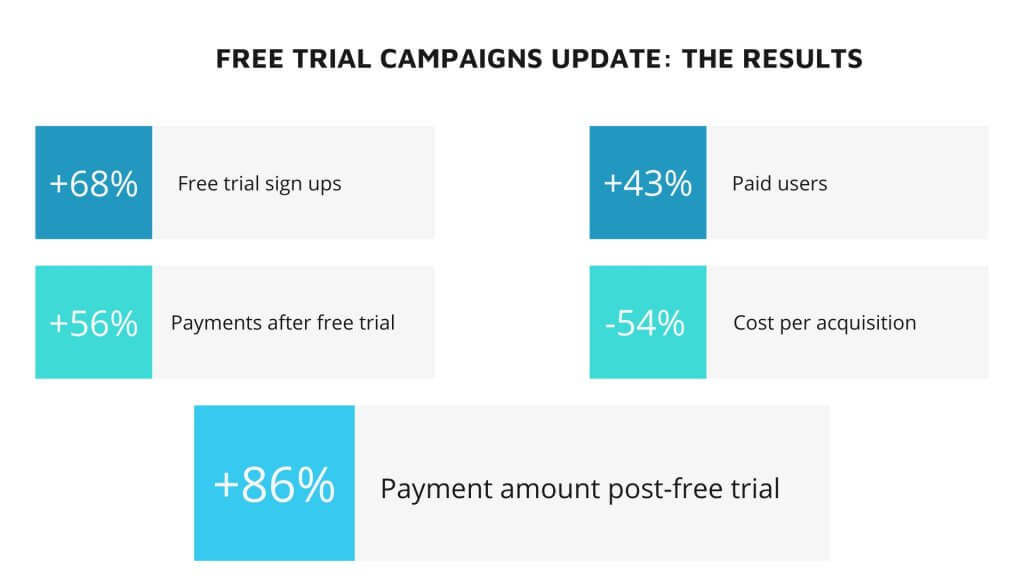The Challenge
At the beginning of the engagement, Obility’s client was facing a well-known challenge in the B2B world: they were offering a $250 credit for a 30-day free trial, which led to a significant amount of people signing up, but these users were canceling before being charged.
In addition, the client was struggling with awareness, the offers that were advertised were mostly bottom-of-the-funnel and there were few assets to educate prospective clients on who the client was or what the solution was offering. This lack of TOFU offers impacted both paid search and paid social performance.
The final challenge was location: certain regions were allocated a lot of budget because of the high traffic volume, but this traffic was not converting after the $250 free trial offer was up.
The Solution
In order to overcome these challenges, Obility put in place a multi-pronged paid search and paid social strategy.
To start, Obility tested out new ad copy variations and creatives for the free trial offer, to understand what resonated the best with the client’s target audience. Each new ad copy and creative variation aligned with campaign-specific keywords and would use creative CTAs to differentiate themselves from the generic “$250 Free Trial” copy.
For paid social specifically, Obility made some big strategy changes to improve the performance. The paid social budget was shifted away from Twitter and used towards Facebook (the best-performing platform), and Facebook’s campaigns were also updated from broad targeting interspace targeting. On LinkedIn, Obility took down all the $250 Free Trial campaigns and focused its efforts on product-specific campaigns and ads to educate the audience about the solution.
On the paid search side, Obility made an unusual choice for B2B and decided to pull the budget from discovery to performance max, since performance max was performing well. In addition, Obility implemented offline conversion tracking so conversions could be further tracked down the funnel, not only to sign-up but all the way to users who have submitted their credit card in their account.
In order to lower the CPA, Obility reviewed and updated the client’s ABM lists on a weekly basis. Users who had signed up but hadn’t added their credit card to their account were added to the “unfunded” ABM list and not retargeted. Users who had engaged with the company over the course of the past month were retargeted and reached out to more frequently.
Finally, Obility turned off the campaigns in regions that were underperforming to make the most of the client’s budget.
The Results
The results of Obility’s efforts started showing quickly on both the paid search and paid social side. In under a quarter, the number of free trial sign-ups increased by 68%, the number of payments past the free trials increased by 56% (and the payment amount went up 86%), the number of paid users increased by 43%, all with a 54% lower CPA.

